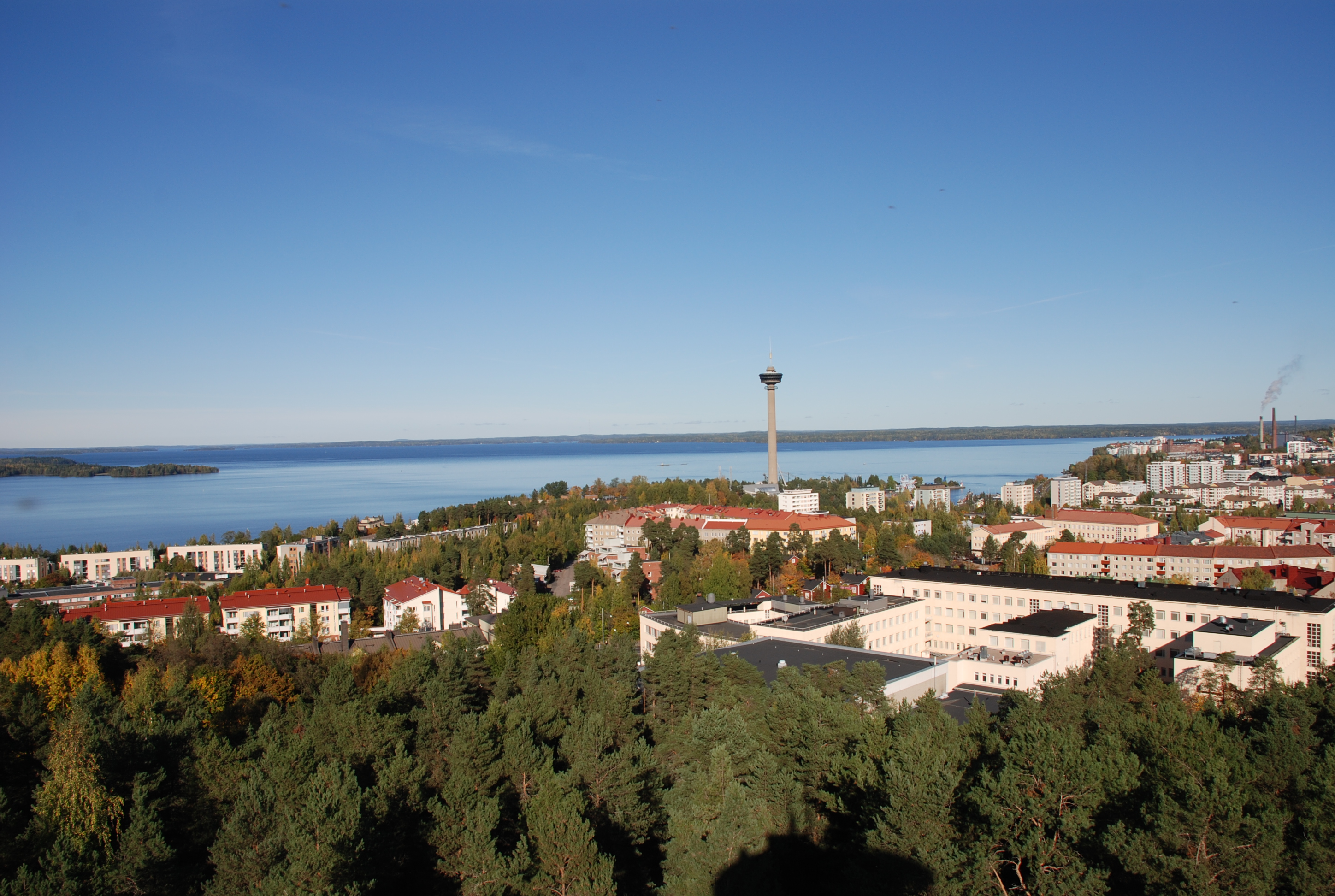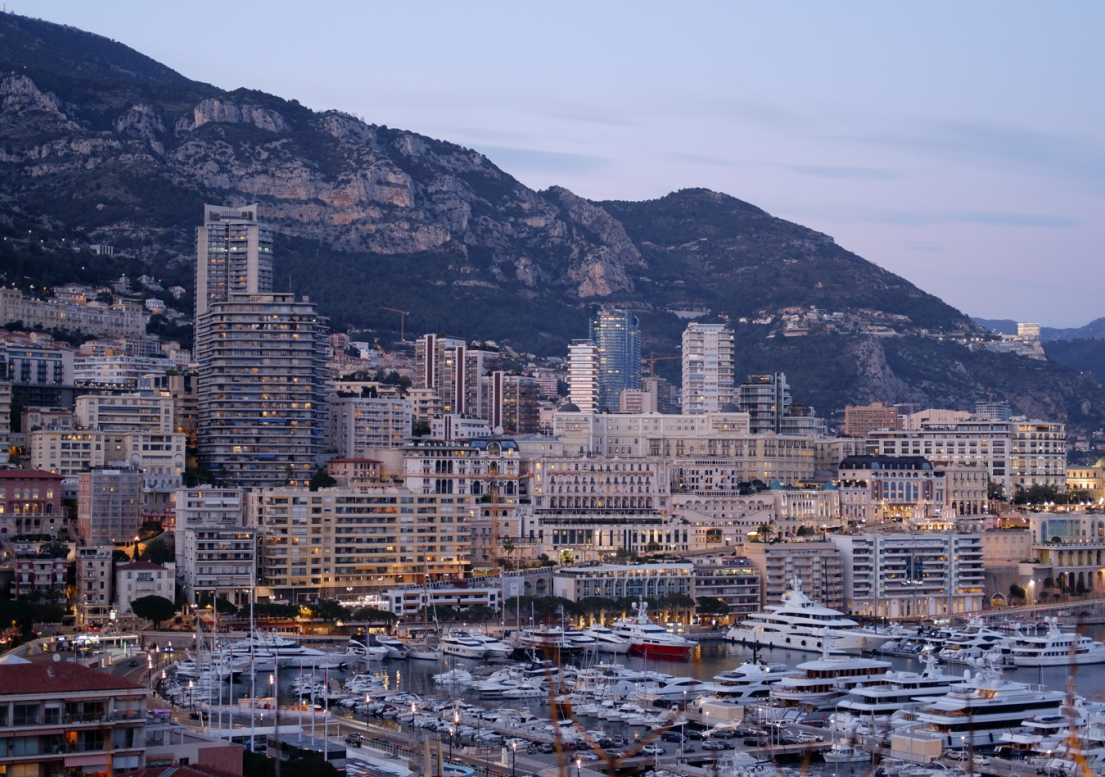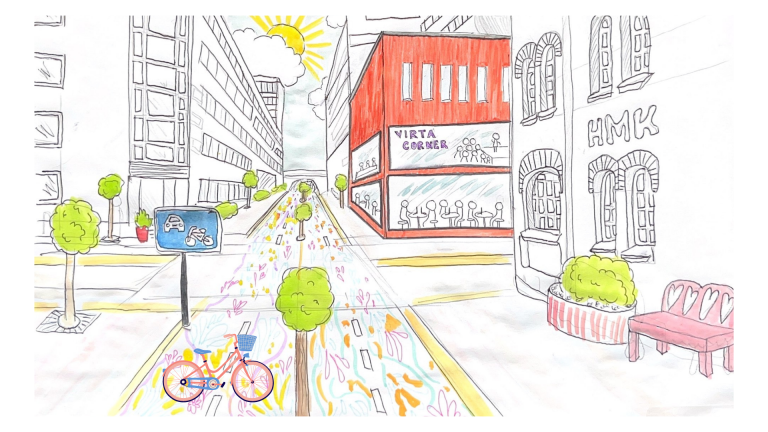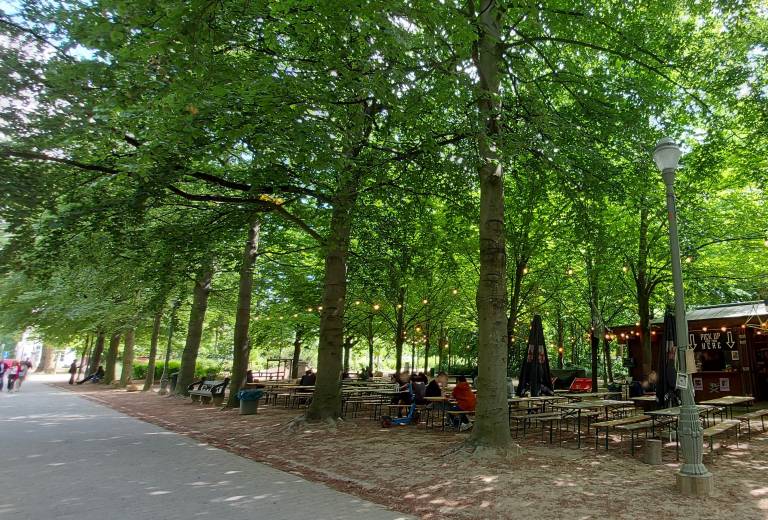We were instructed to imagine a news headline from 2050 that would talk about Tulli once our idea has been successfully implemented. This was the most effective exercise for me because we were encouraged to think outside of the constraints that hold back most urban development projects: public opinion, finance, and the laws of physics. Once we had a vision for the future, we were able to create our solution and a guideline on how to achieve the more realistic aspects of our 2050 dreamscape.
Currently, Tulli is not meeting its full potential for entertainment and commerce and is a (mostly) boring empty neighbourhood. I see future Tulli as a completely immersive experience that draws in visitors to see the lighting spectacle and creates a neighbourhood that naturally supports pedestrian traffic to shops and entertainment venues.
Physical form should exceed the traditional imagination and increase functionality. Expanding on the light and soundscape policy that our group proposed, my dream for Tulli is a district that uses lighting in creative ways with fixtures viewed first as pieces of public art, and second as urban utilities.
In an entertainment district like Tulli, it would be exceptional if all the lighting fixtures were designed by local artists, aimed with respect to lighting guidelines, and intented to interact with pedestrian behaviour, being able to move, change colour, and encourage play. It is important that lighting is not wasted so general constraints must be made, but in my dream, artists would be given the freedom to make bespoke pieces out of materials and designs that are completely abstract and look as if they defy the laws of gravity. In the future of Tulli, it would be physically possible to discard the institutional lamp pole for the entertainment district and instead use multiple distinct points to create an intentional pool of light.

Transform lighting with digital twins, smart lighting, and the Internet of Things
The potential for digital twins was presented to me during a guest lecture by Tiina Talvitie, Helsinki City Geodesist, in Transportation Infrastructures (another course within the SUD degree program). Tiina shared how Helsinki is building their digital twin model to represent the physical reality of Helsinki and act to receive and respond to data from the urban environment. Automated urban lighting is already common practice for turning lights on and off, and some smart lighting solutions have dimming features based on pedestrian presence, but I advocate there is yet untapped potential for using a digital twin in urban lighting. Aiming the solutions towards all aspects of sustainability, a digital twin could be used to make urban lighting not only more environmentally sustainable through energy reduction, but also more socially sustainable by curating lighting environments for pedestrians rather than motor vehicles.
Our literature review found that pedestrians tend to prefer warmer lighting than the cold lighting needed for vehicle visibility and that the lighting temperature preference was also dependant on ambient temperature (Hao, et al., 2022). With ample data on pedestrian preferences, a digital twin of urban lighting systems could respond to temperatures to street level accuracy for the human scale. Furthermore, a digital twin could receive input from extreme weather warnings and produce a city-wide visual flash or signal to residents to increase accessibility of urgent public announcements.
In addition to adapting to ambient temperature, the opportunities for urban lighting are only limited by imagination and public budget. By connecting lighting to the Internet of Things, data collected from points of urban interest could be used to curate optimal lighting conditions for safety, energy efficiency, and social wellbeing. For example, in a future of automated vehicles with excessively bright headlights, the headlights could be dimmed (within safe reason) when the vehicle enters an area with sufficient street lighting, or the streetlight could supplement lighting like a rolling curtain to the exact location of a vehicle to reduce light pollution. One could also imagine a future where a digital twin responds immediately to an emergency 112 call and increase brightness of the surrounding streets, not only to increase security and attention for those in danger but also visibility and signalling for first responders and video surveillance. Location data of emergency vehicles could also be shared to increase brightness and adjust lighting temperature for optimal visibility along their route.
To evaluate the lived experience, Calderon, et al. (2022) have proposed using a virtual reality interface for the digital twin to test different lighting scenarios. The virtual reality interface would allow decision makers to be more immersed with and better visualize urban challenges and maintenance.
I imagine a future without light pollution, the urban night is active, and we are kept company by the milky way. The increased safety brought upon by urban lighting cannot be dismissed, but the emitted light pollution deprives urban residents and fauna of the natural night sky. To bring back the stars in my imagined future Tulli, a digital twin could respond to lunar patterns and dim on nights where the moon is brightest, or in Nordic countries, lighting could be turned off completely when the chances for visible northern lights are high enough.
Not all these ideas can or should be implemented, but they serve as a starting point for ideation. I ambitiously believe that the sculpture-like luminaires alongside the potential of a digital twin are the future for urban lighting. With these tools, Tulli could become a leading example of urban lighting tailored for the human experience and enhanced by the beauty of what natural light the sun, stars, and earth provide.
Text and figures by Atticus Russwurm
This text has been written as part of a series of blogs by the SUD students, where they reflect on their experiences working together – and with people outside of the university – to develop their ideas for the Urban Lab.
References
Calderon, G. et al. (2022) ‘Towards a Digital Twin for Smart Street Lighting systems Using a Virtual Reality interface’, in The Institute of Electrical and Electronics Engineers, Inc. (IEEE) Conference Proceedings. 2022 Piscataway: The Institute of Electrical and Electronics Engineers, Inc. (IEEE). p.
Hao, X. et al. (2022) Pedestrians’ psychological preferences for urban street lighting with different color temperatures. Frontiers in psychology. [Online] 13971700–971700





